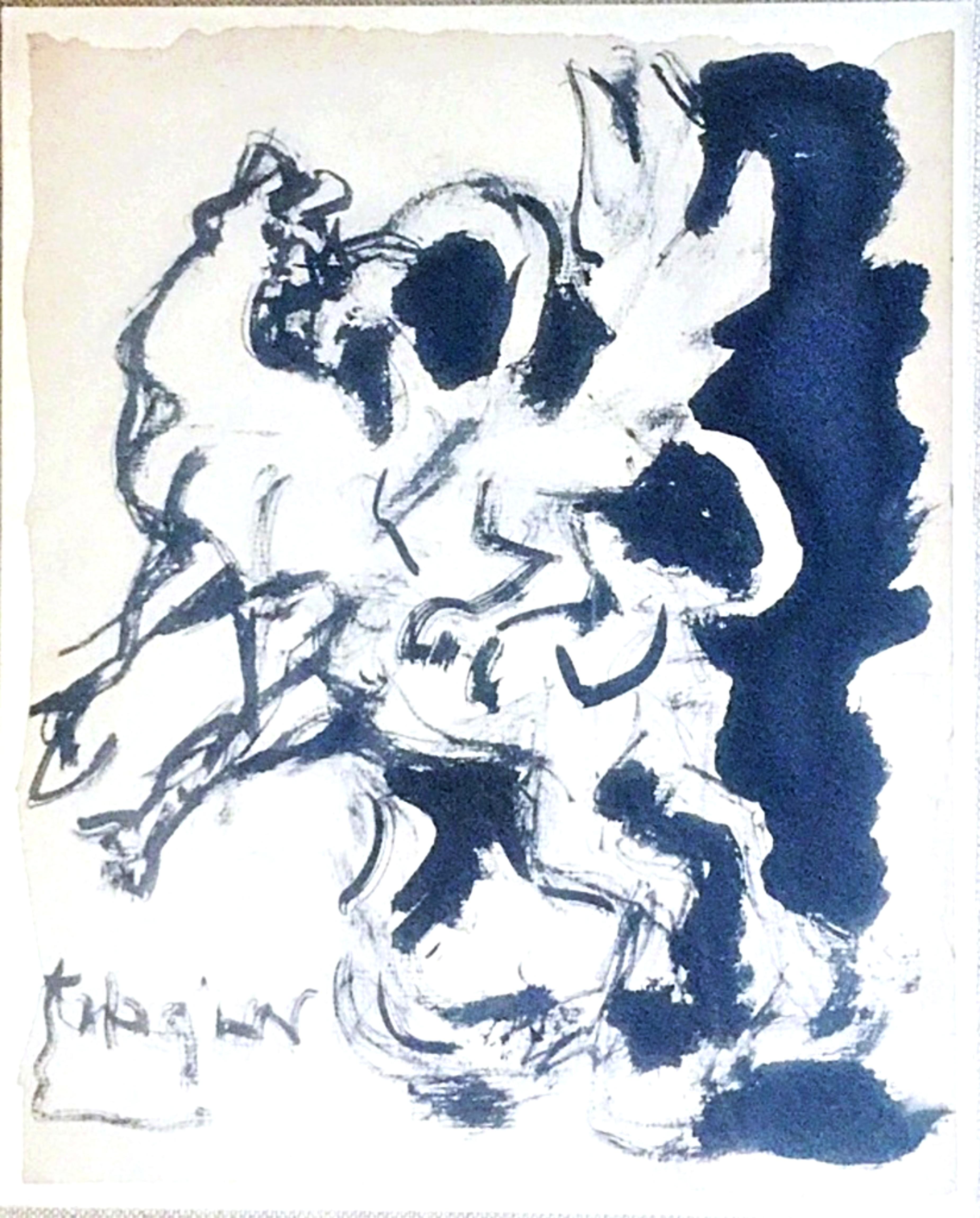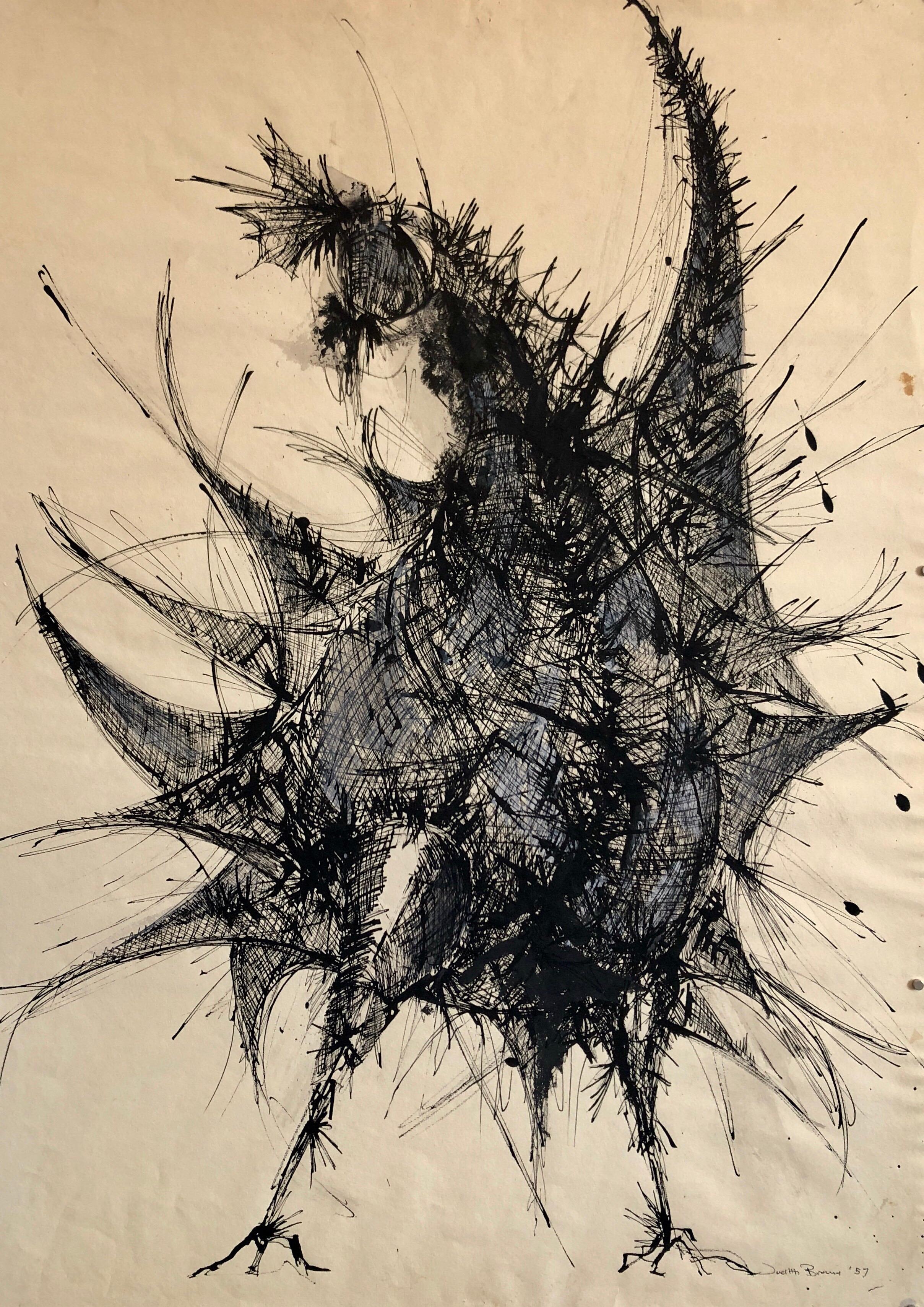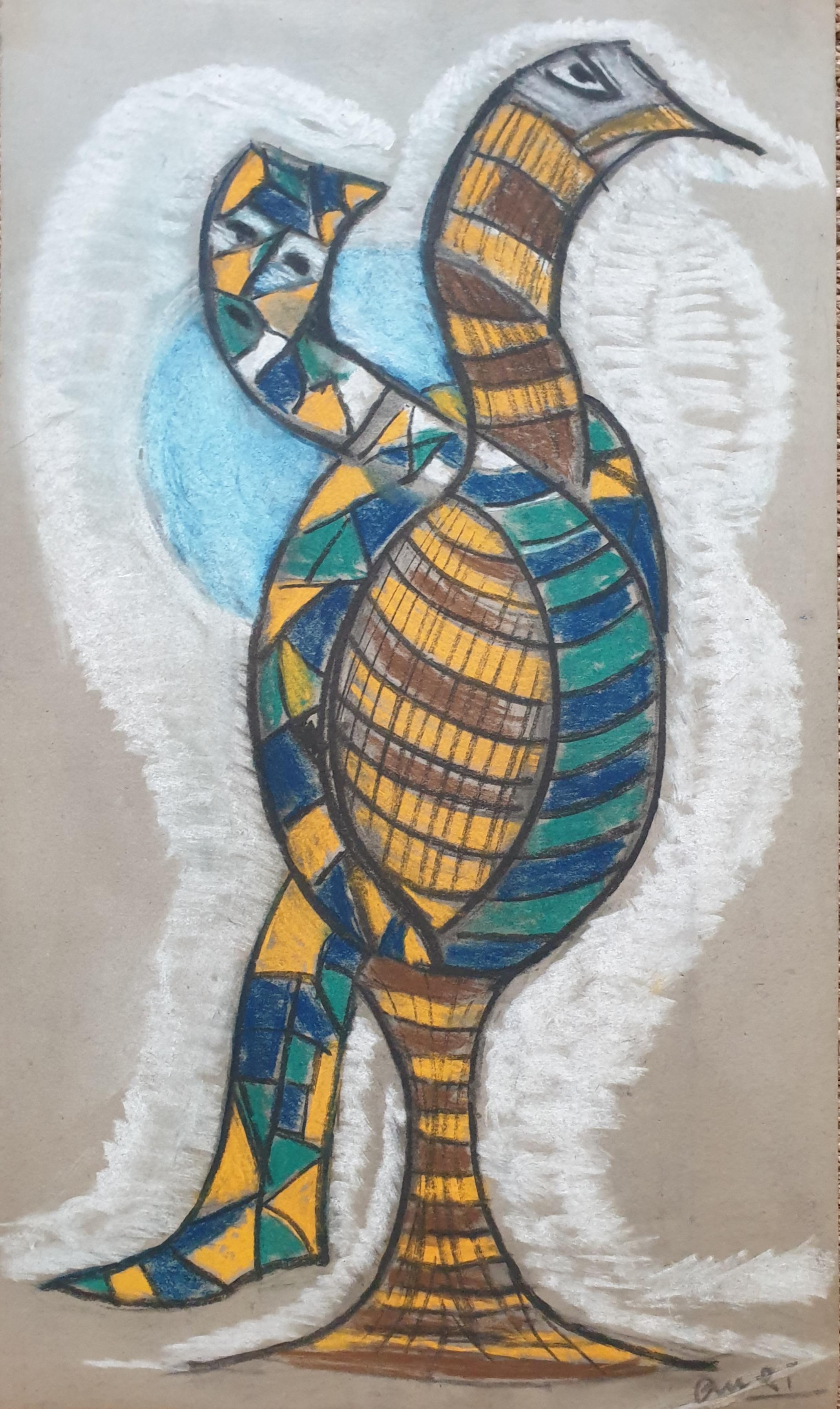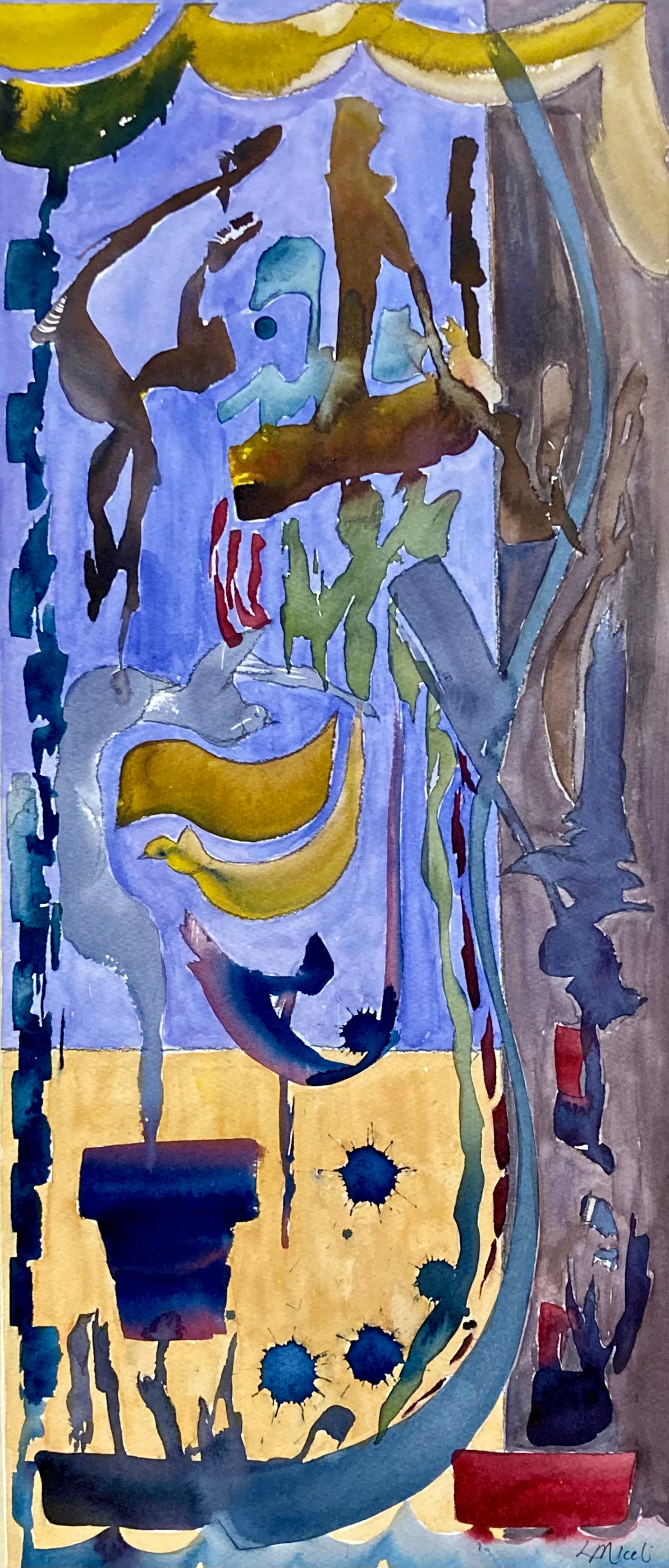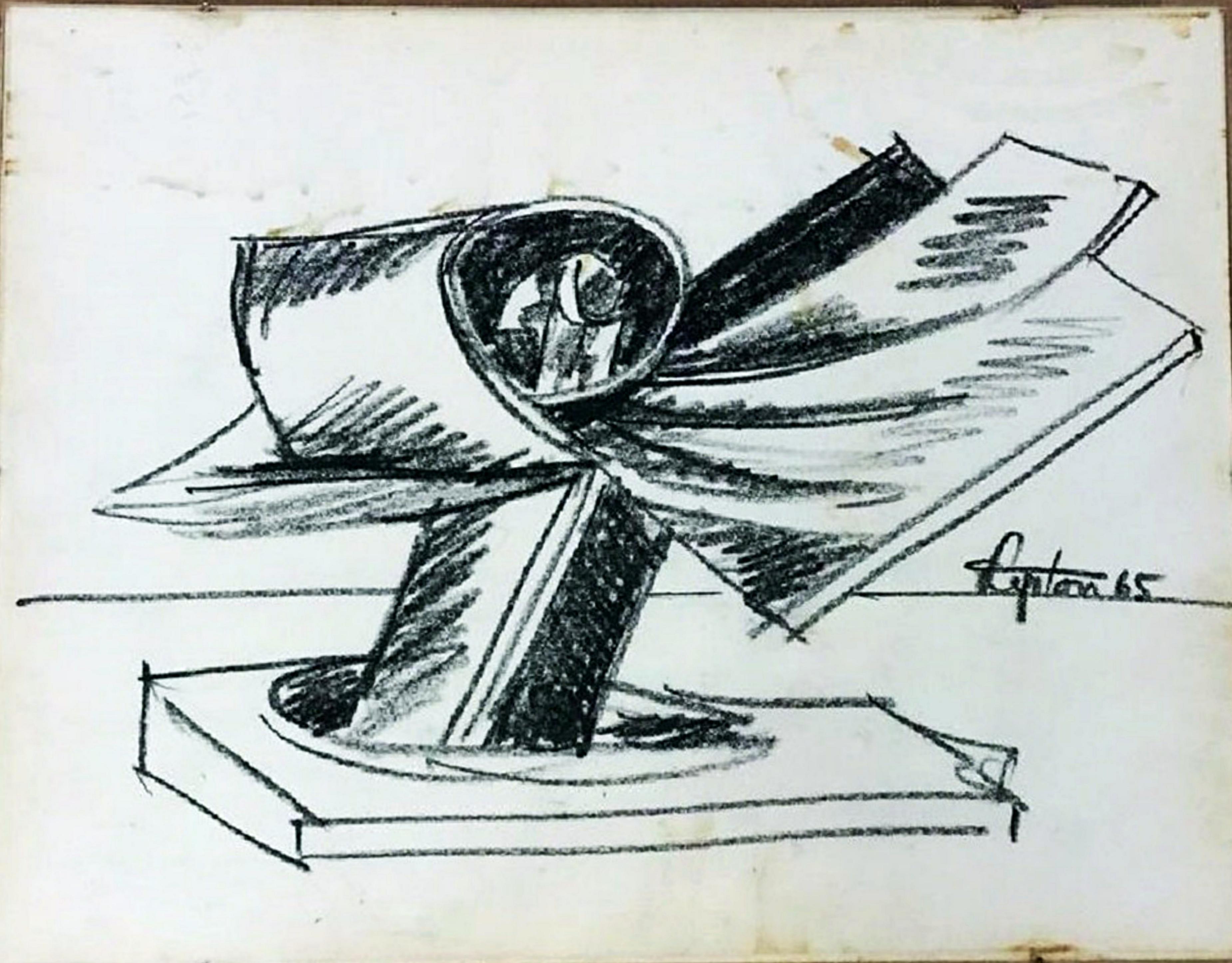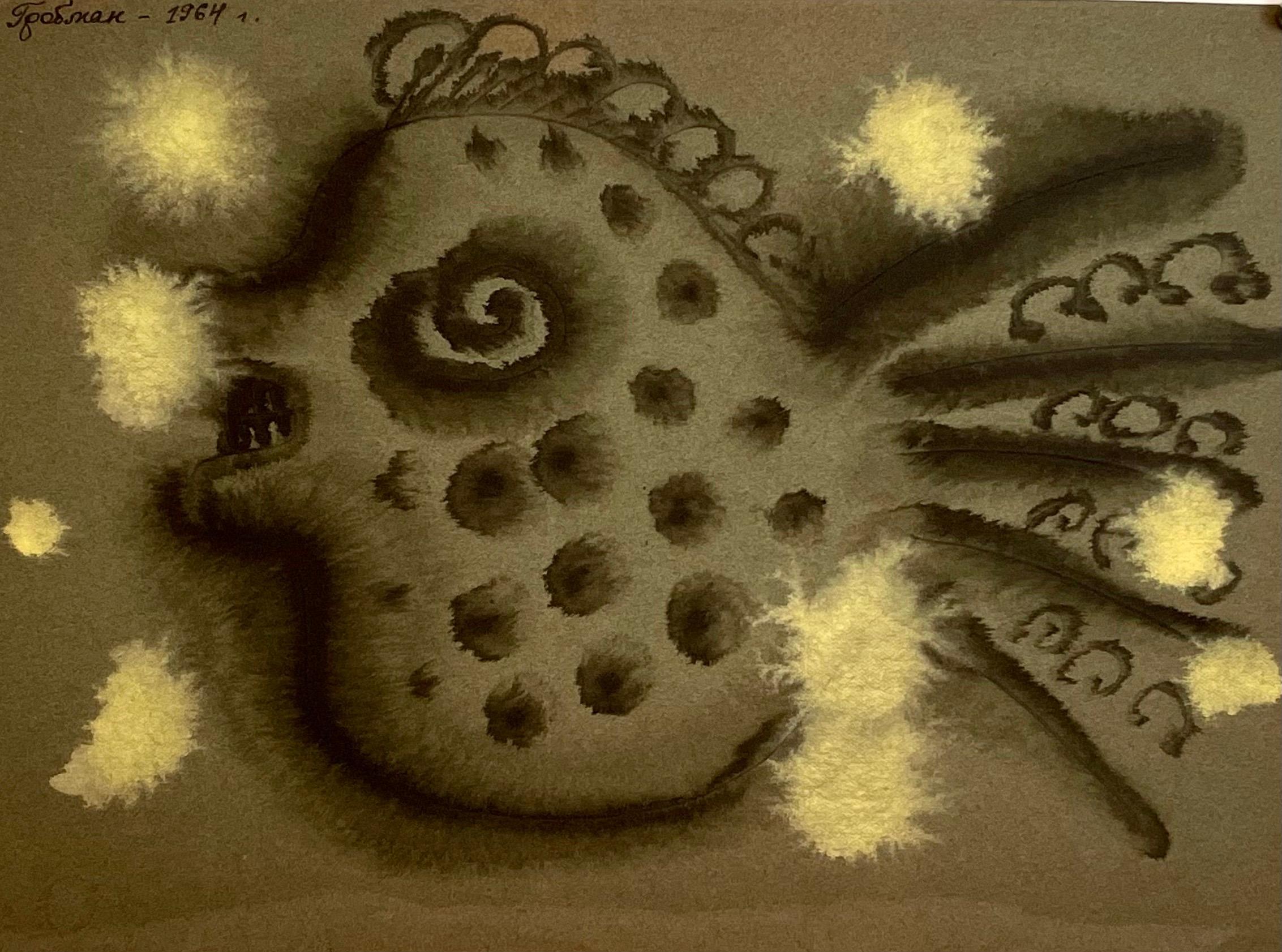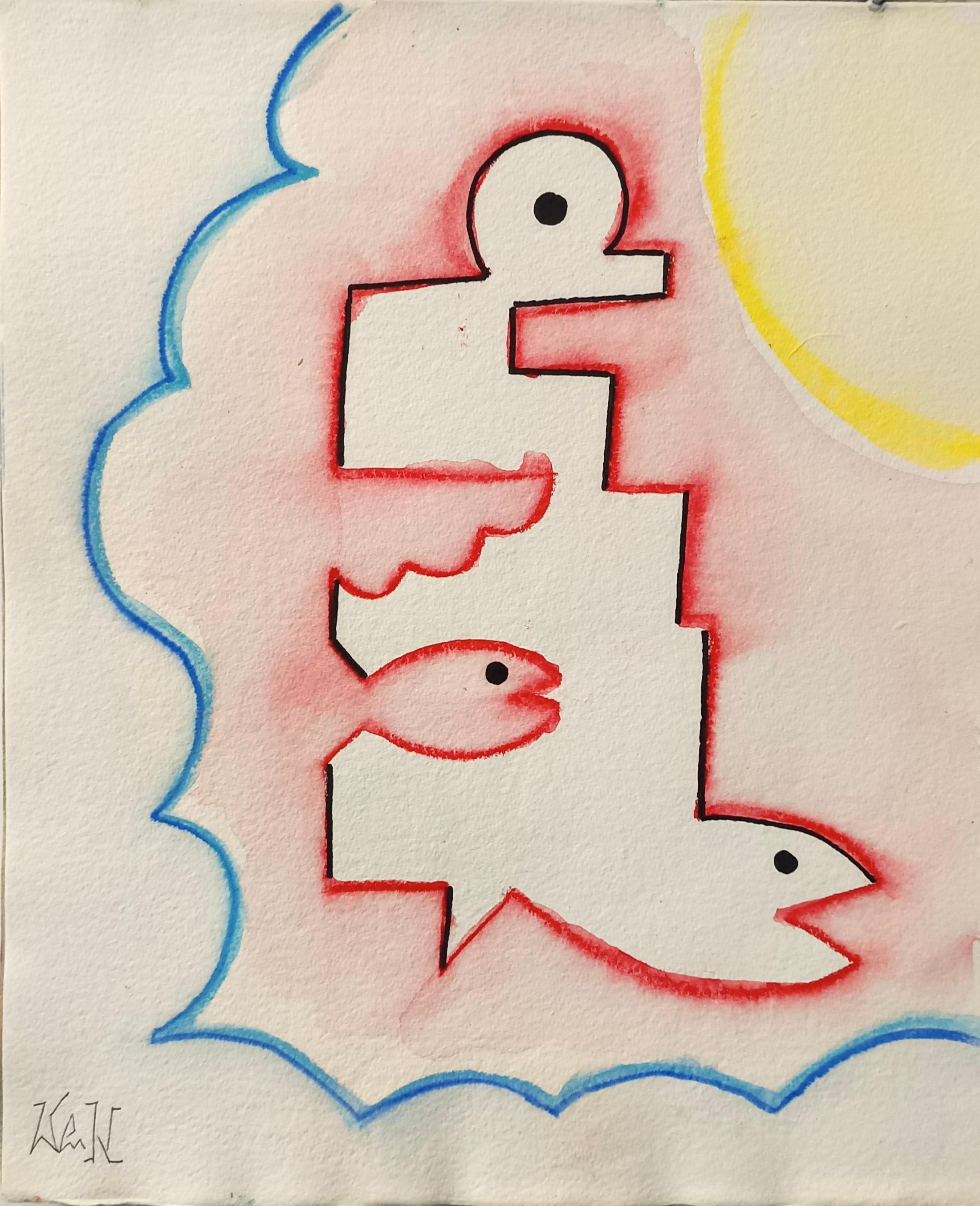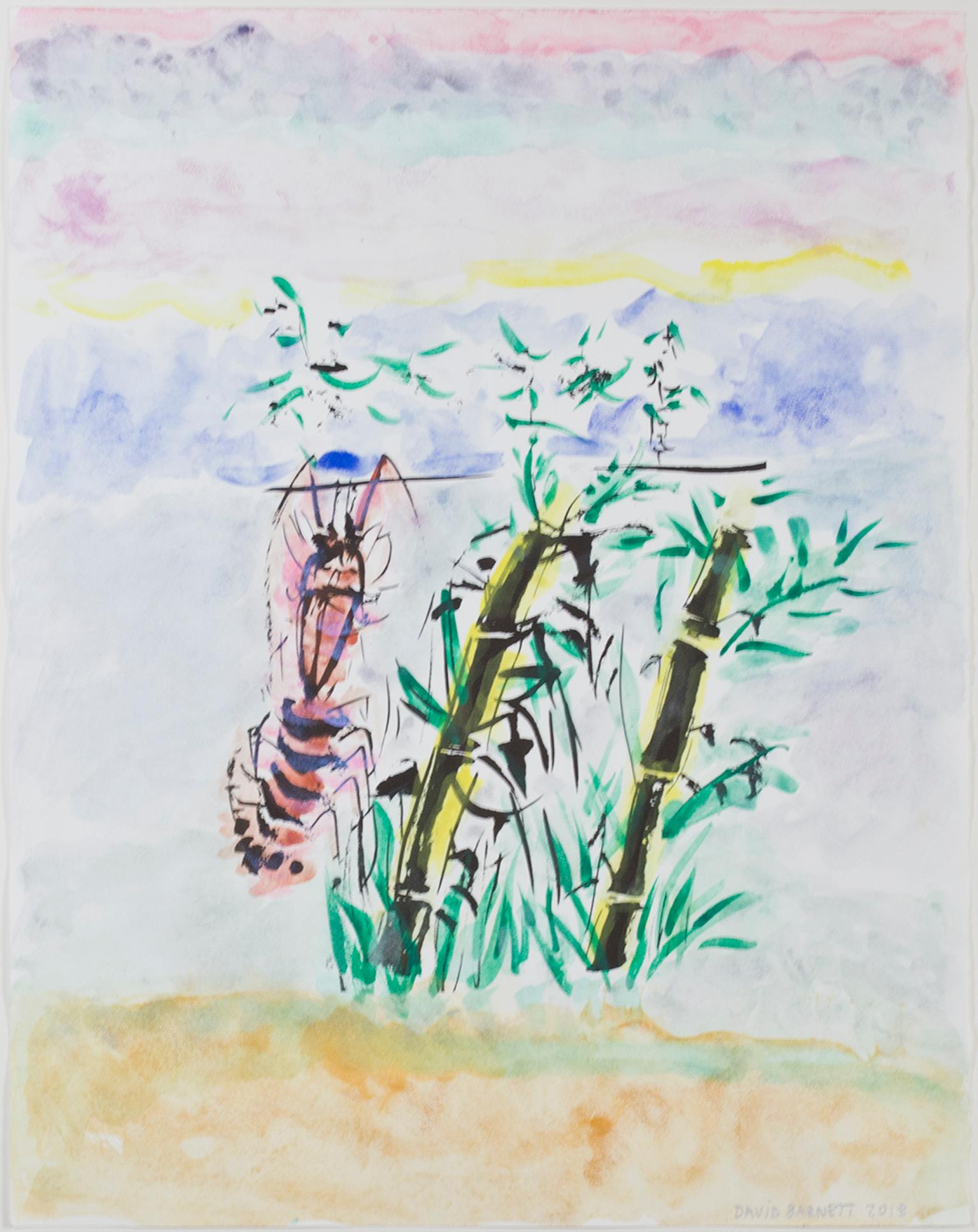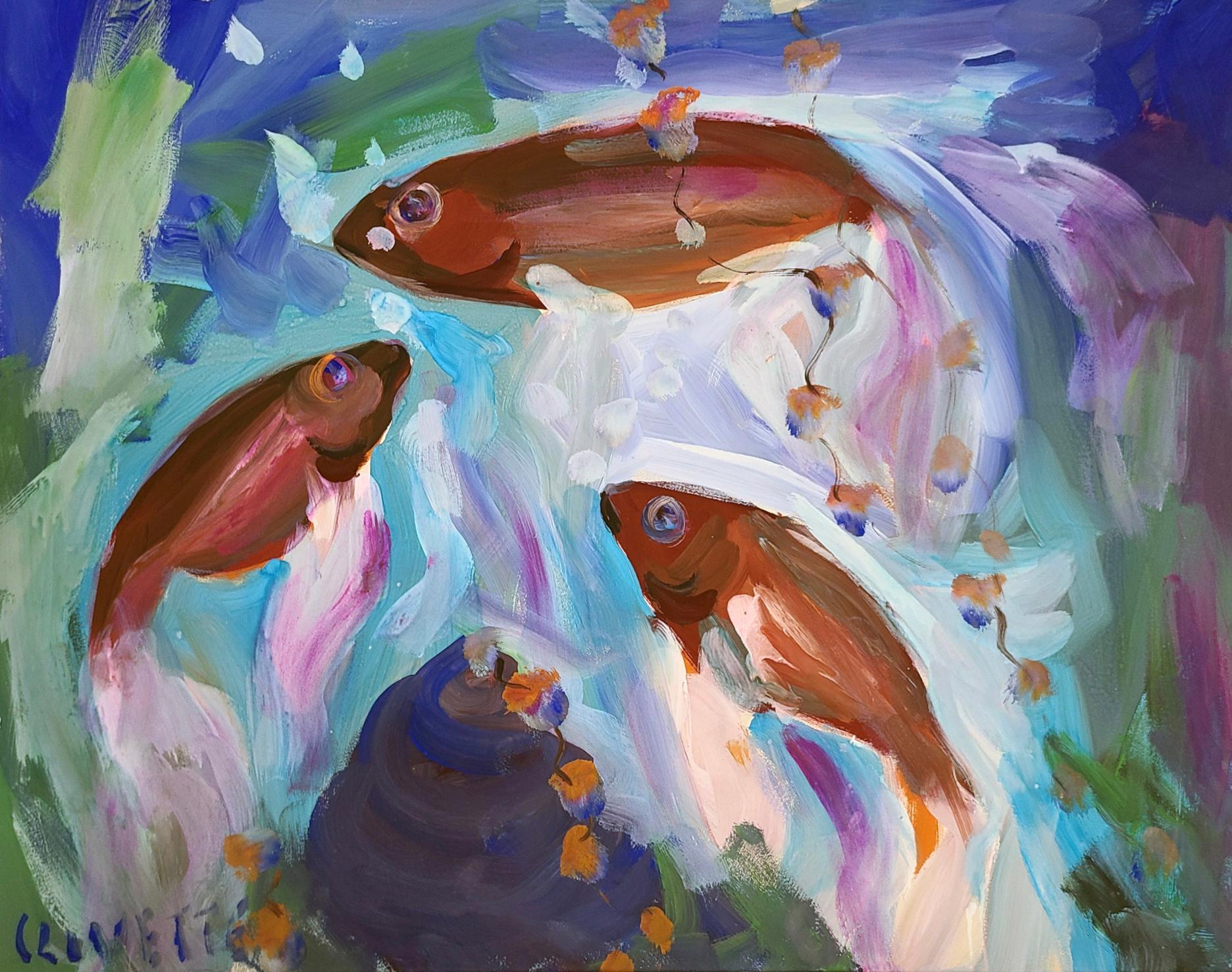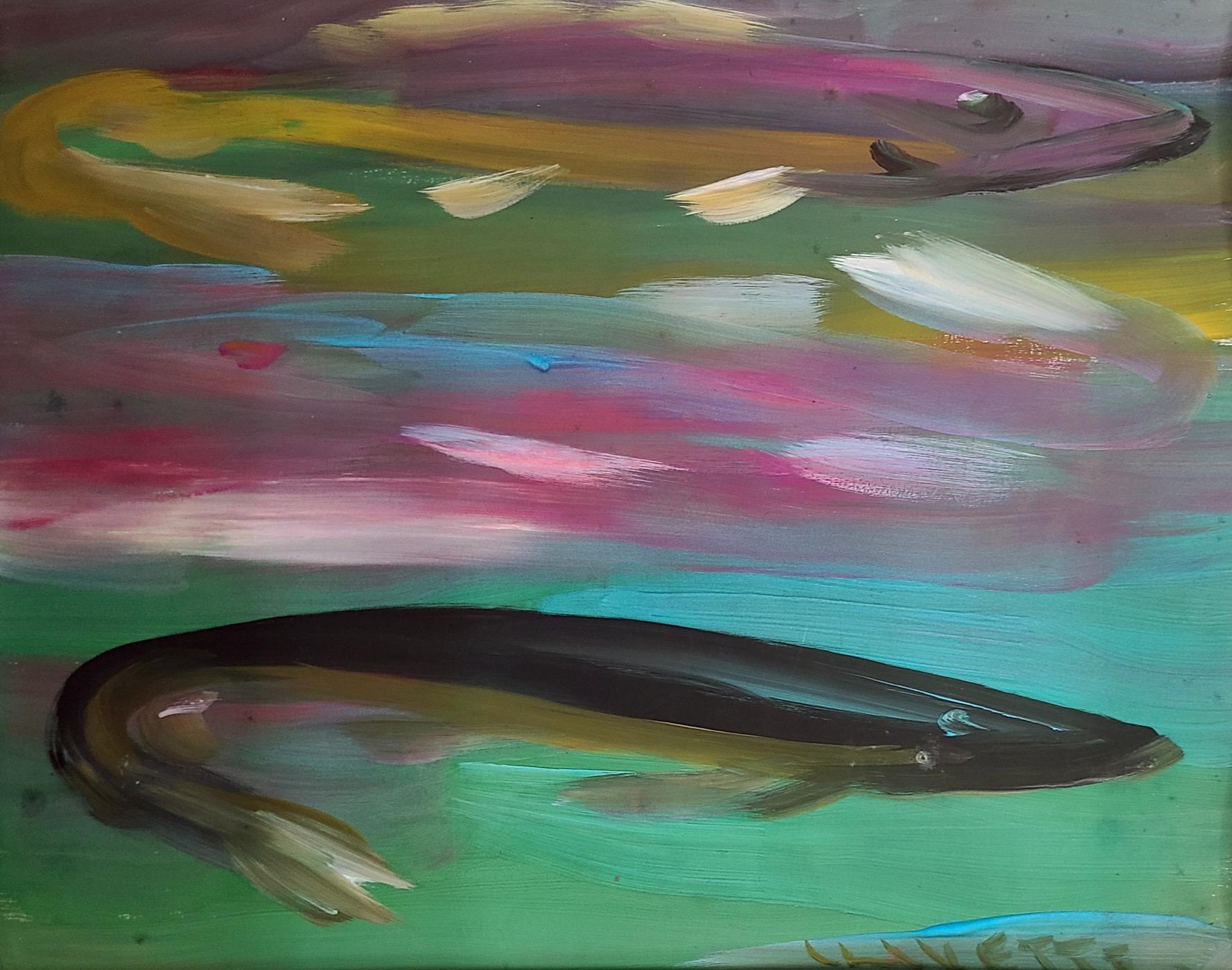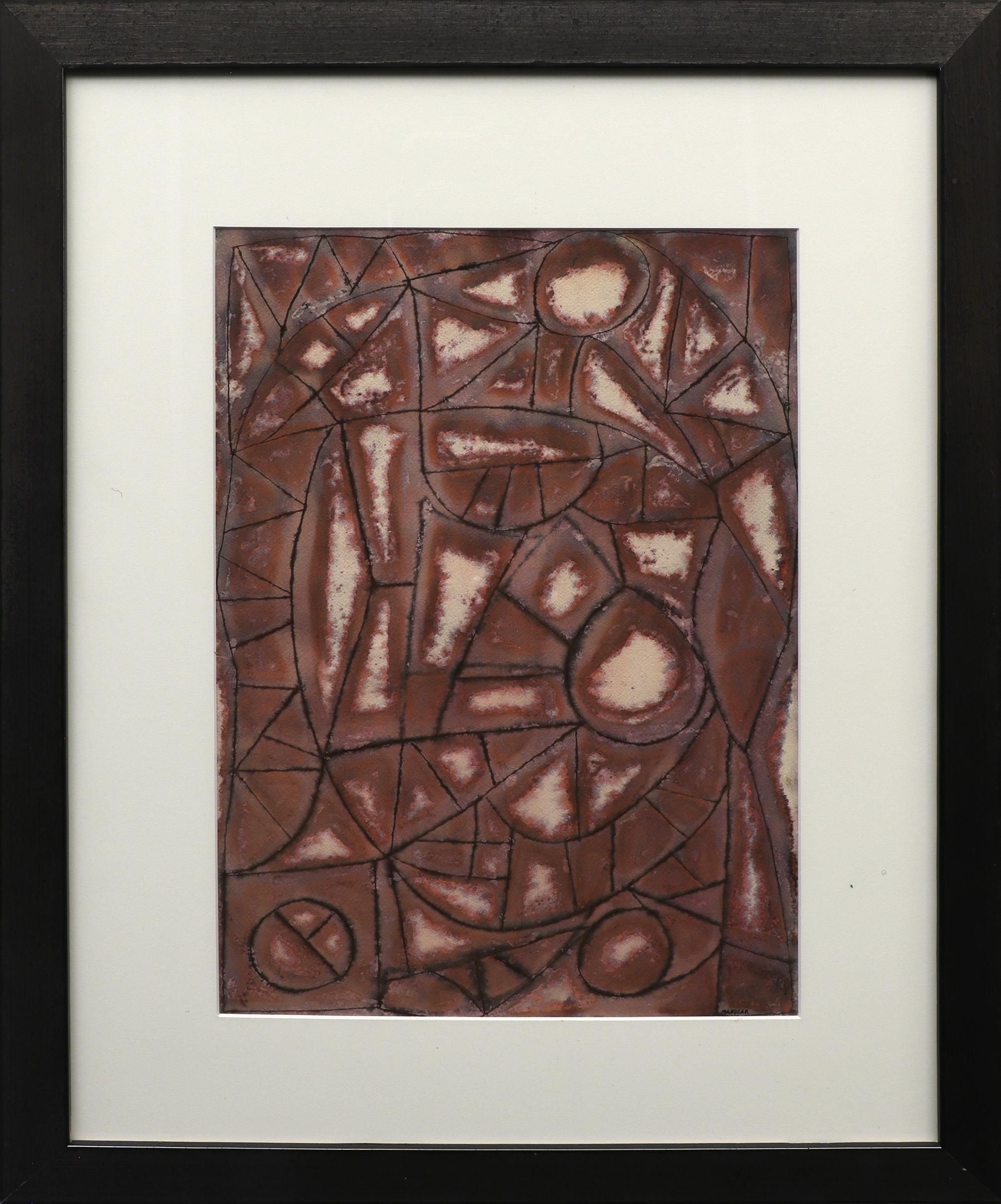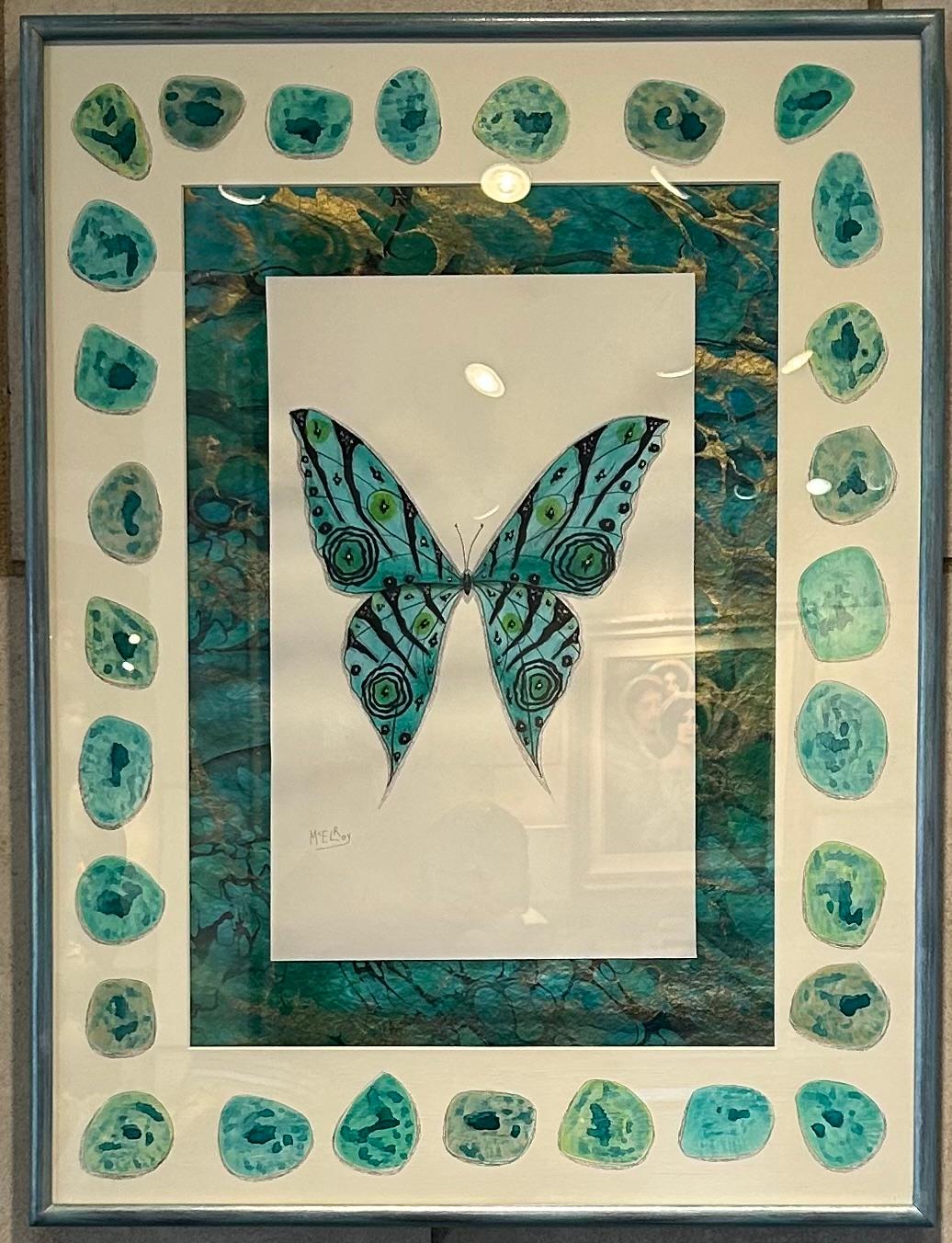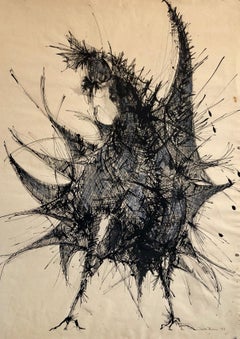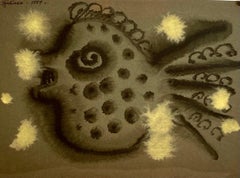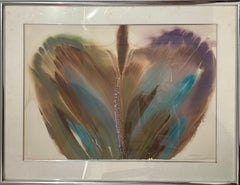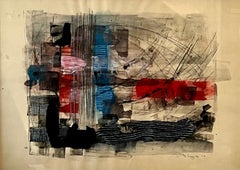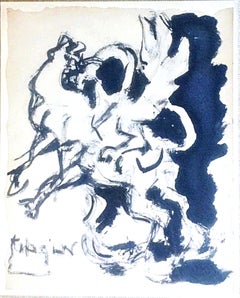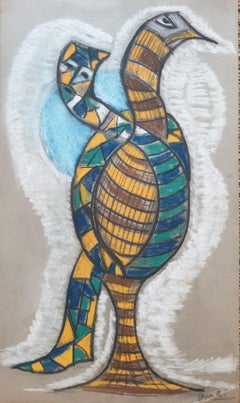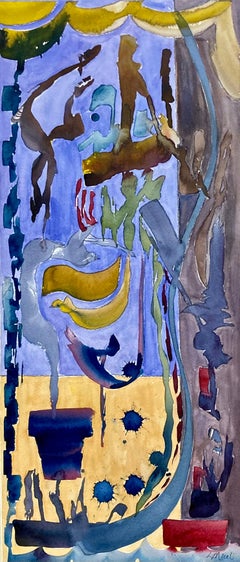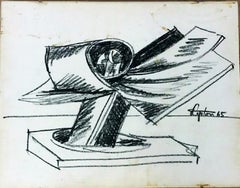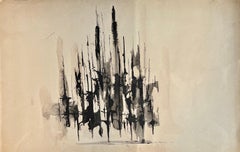
Abstract Expressionist Watercolor Painting Sculpture Woman Artist Judith Brown
View Similar Items
Want more images or videos?
Request additional images or videos from the seller
1 of 11
Judith BrownAbstract Expressionist Watercolor Painting Sculpture Woman Artist Judith Brown1962
1962
Price:$850
About the Item
- Creator:Judith Brown (1931 - 1992, American)
- Creation Year:1962
- Dimensions:Height: 15 in (38.1 cm)Width: 22 in (55.88 cm)
- Medium:
- Movement & Style:
- Period:
- Condition:light toning. minor wear. small puncture in bottom margin with no loss. please see photos.
- Gallery Location:Surfside, FL
- Reference Number:1stDibs: LU38213839802
About the Seller
4.9
Platinum Seller
Premium sellers with a 4.7+ rating and 24-hour response times
Established in 1995
1stDibs seller since 2014
1,777 sales on 1stDibs
Typical response time: 1 hour
Authenticity Guarantee
In the unlikely event there’s an issue with an item’s authenticity, contact us within 1 year for a full refund. DetailsMoney-Back Guarantee
If your item is not as described, is damaged in transit, or does not arrive, contact us within 7 days for a full refund. Details24-Hour Cancellation
You have a 24-hour grace period in which to reconsider your purchase, with no questions asked.Vetted Professional Sellers
Our world-class sellers must adhere to strict standards for service and quality, maintaining the integrity of our listings.Price-Match Guarantee
If you find that a seller listed the same item for a lower price elsewhere, we’ll match it.Trusted Global Delivery
Our best-in-class carrier network provides specialized shipping options worldwide, including custom delivery.More From This Seller
View AllLarge Ink Drawing Abstract Expressionist Rooster Woman Artist
By Judith Brown
Located in Surfside, FL
Judith Brown (December 17, 1931 – May 11, 1992) was a dancer and a sculptor who was drawn to images of the body in motion and its effect on the cloth surrounding it. She welded crushed automobile scrap metal into energetic moving torsos, horses, and flying draperies.
Brown attended Sarah Lawrence College in Yonkers, New York (B.A., 1954), where she learned to weld from her teacher, Theodore Roszak, a pioneering abstract expressionist sculptor. This is done in a style similar to Leonard Baskin.
Select Commissions
Mural Sculpture, Lobby, Louisville Radio Station WAVE
Fountain, commissioned by Architectural Interiors, New York City
Model, designed and executed for Festival of Two Worlds, Spoleto, Italy
Sculpture, designed for Electra Film Productions, NYC
Noah's Ark, exhibited at Bronx Zoo, New York City, at Rochester Museum and Science Center, Rochester, New York, and at Hopkins Center, Hanover, New Hampshire
Store Windows, executed Tiffany & Company Windows, New York City, Christmas 1957, 1959, 1962, October 1969, Spring 1979, and October 1980
Wall Sculptures: for Youngstown Research Center (1963-4), commissioned by Youngstown Steel Company, Youngstown, Ohio; for Hecht and Company, Landmark Shopping Center, Alexandria, Virginia, Daniel Schwartzman, Architect; for Lobby, 570 Seventh Avenue, New York City, Giorgio Cavaglieri, Architect; for Lobby, Cities Service Company's New Research Center, Cranbury, New Jersey; for Ottauquechee Health Center, Woodstock, Vermont
Eternal Lights: for Congregation Beth-El, South Orange, New Jersey; for Congregation Sharey Tefilo, East Orange, New Jersey
Menorahs: commissioned by Architect Fritz Nathan for the Permanent Collection of the Jewish Museum, New York City; commissioned by Smith College for the Helen Hill Chapel, Northampton, Massachusetts; commissioned by Jules Scherman, of Wisteria Press, Inc., New York City
Altar Cross, commissioned by Smith College for the Helen Hill Chapel, Northampton, Massachusetts
Landscape, Memorial Piece for Gustave Heller, YM-YWCA, Essex County, New Jersey
Memorial Plaque for Robert A. Ferguson, Westchester County Airport, Purchase, New York
Sculpture for Vice President's office, Atlantic Richfield Company, New York City
Bronze Relief Sculpture for Gymnasium Lobby, South Richmond High School, Staten Island, New York, Daniel Schwartzman, Architect
Poster, Stratton Arts Festival, Stratton, Vermont
Medallion, commissioned by Brandeis University National Women's Committee, New York City
Model for Fountain for the Plaza at Windsor, Vermont
Bronze Sculpture, commissioned by Intramural, Inc. for Building Lobby, N/E Cor. 79th Street and Second Avenue, New York City
Presentation Piece, commissioned by Graphic Arts Associates of Delaware Valley, Philadelphia, Pennsylvania
Wall Mural, Noah's Ark, Roosevelt Hospital, New York City
1977: Designed and executed Hanes Hosiery "Million Dollar Award"; Designed and executed "Old Spice" Smart Ship Award
1978: Commissioned to design and execute the "Walter White Award" for the NAACP for presentation to Hubert Humphrey; Commissioned to design and execute the Award for the Honorees of the National Board YWCA's First Tribute to Women in International Industry
1979: Designed and executed Jewelry for the Museum of Modern Art, New York City; Designed and executed limited edition of Mazuzas for Brandeis University-National Women's Committee, New York City
1980: Bronze Cross commissioned for St. James Episcopal Church, Woodstock, Vermont
1982: Eubie Award, New York Chapter of the National Academy of Recording Arts and Sciences
1985: Two Sculptures, Marriott Hotel, Orlando, Florida
1986: Two large Sculptures for indoor reflecting pools, Palm Desert Hotel, Palm Springs, California; John Portman, Eight Sculptures for Peachtree Plaza Hotel, Atlanta, Georgia; John Portman, Beach House, Sea Island, Georgia
1987: Loan Installation, DeCordova Museum, Lincoln, Massachusetts
1988: Eleven foot outdoor Sculpture for Front Plaza, River Court, Charles River, East Cambridge, Massachusetts, H. J. Davis Development Corp.; Tomie dePaola...
Category
1950s Abstract Expressionist Animal Drawings and Watercolors
Materials
India Ink, Handmade Paper
Post Soviet Nonconformist Avant Garde Russian Israeli Gouache Painting Grobman
By Michail Grobman
Located in Surfside, FL
Michail Gorbman, Russian Born 1939.
Watercolor on Green Paper, Black Fish with Yellow Dots.
Hand signed Upper Left, Dated 1964.
Signed verso and Described.
Dimensions: 10 X 7.25 inches
\
Michail Grobman (Russian: Михаил Гробман, Hebrew: מיכאיל גרובמן, born 1939) is an artist and a poet working in Israel and Russia. He is father to Hollywood producer Lati Grobman and Israeli architect Yasha Jacob Grobman.
Biography
1939 – Born in Moscow.
1960s – Active member of The Second Russian Avant-Garde movement in the Soviet Union.
1967 – Member of Moscow Artists Union.
1971 – Emigrates to Israel and settles in Jerusalem.
1975 – Founded the Leviathan group and art periodical (in Russian).
Since 1983, he lives and works mainly in Tel Aviv.
Awards
In 2001, Grobman was a co-recipient of the Dizengoff Prize for Painting.
Solo exhibitions
2007 – Last Skies, Loushy & Peter Art & Projects, Tel Aviv (cat. text: Marc Scheps)
2006 – Creation From Chaos to Cosmos, Bar-David Museum of Fine Art and Judaica, Kibbutz Baram (cat. text: Sorin Heller)
2002 – The Last Sky, installation, Tsveta Zuzoritch pavilion, Belgrad (cat. text: Irina Subotitch)
1999 – Mikhail Grobman: Works 1960–1998, The State Russian Museum, St. Petersburg (cat. texts: Evgenija Petrova, Marc Scheps, Lola Kantor-Kazovsky, Michail German)
Michail Grobman was born in Moscow. He grew up writing poetry, essays and literary prose. In the 1960s, he was active in the Second Russian Avant-garde movement in the Soviet Union. In 1971, he immigrated to Israel. In 1975, he established the Leviathan school together with Avraham Ofek and Shmuel Ackerman, seeking to combine symbolism, metaphysics and Judaism in an all-inclusive “national style.”
Grobman’s lithograph work employs images and symbols from Jewish mysticism and Kabbalah. His paintings incorporate texts in Russian and Hebrew. In addition to his artistic endeavors, he writes about art and aesthetics. The group combined conceptual art and "land art" with Jewish symbolism. Of the three of them Avraham Ofek had the deepest interest in sculpture and its relationship to religious symbolism and images. In one series of his works Ofek used mirrors to project Hebrew letters, words with religious or cabbalistic significance, and other images onto soil or man-made structures. In his work "Letters of Light" (1979), for example, the letters were projected onto people and fabrics and the soil of the Judean Desert. In another work Ofek screened the words "America", "Africa", and "Green card" on the walls of the Tel Hai courtyard during a symposium on sculpture
Part of the generation of emigre Russian artists, many Jewish, that included Yuri Kuper, Komar and Melamid, Eduard Steinberg, Erik Bulatov, Viktor Pivovarov, Vladimir Yankilevsky, Ilya Kabakov and Grisha Bruskin.
Date of Birth: 1939, Moscow
1960s Active member of The Second Russian Avant Garde
1967 Member of the Moscow Painters Association
1971 Immigrated to Israel and settled in Jerusalem
1975 Founded the Leviathan group and art periodical (in Russian)
Since 1983 Lives and works in Tel Aviv
.
Selected Solo Exhibitions:
2002 Pavilion Zveta Zuzovich, "The Last Sky", Belgrad (cat: Irena Subotitch)
1999 The State Russian Museum, ST. Petersburg
1998 "Picture = Symbol + Concept", Herzliya Museum of Art, Herzliya
1995 "Password and Image", University Gallery, Haifa University
1990 Tova Osman Gallery, Tel Aviv
1989 "The Beautiful Sixties in Moscow", The Genia Schreiber University Art Gallery, Tel Aviv University (with llya Kabakov; cat. text: Mordechai Omer]
Spertus Museum, Chicago
Beit Rami and Uri Nechushtan, Ashdot Yaacov (leaflet)
1972 Nora Gallery, Jerusalem 1973 - Negev Museum, Beer Sheva
1971 Tel Aviv Museum of Art (cat. text: Haim Gamzu)
1966 Mos-lng-Projekt, Moscow
1965 Artist's House, Moscow
Energy Institute, Moscow
History Institute, Moscow
Usti-nad-Orlicy Theatre,Czechoslovakia (leaflet text: Dushan Konetchni)
1959 Mukhina Art Institute, Leningrad
.
Selected Group Exhibitions:
2003 "Yes do yourself...", Regeneration of Judaism in Israeli art, Zman Omanut Tel Aviv (cat: Gideon Ofrat)
1999 "Russian post-war avantgarde", The Trajsman Collection in the State Russian Museum, St. Petersburg Tretjakov National Gallery, Moscow (cat. text: Yevgenij Barabanov, John...
Category
20th Century Modern Animal Drawings and Watercolors
Materials
Paper, Watercolor
Modernist Abstract Expressionist Color Field Watercolor Painting Lamar Briggs
By Lamar Briggs
Located in Surfside, FL
Hand signed
frame measures 39 X 51 sheet measures 29 X 41
This will be shipped unframed
If you would like the frame please contact me.
Apple or fruit shape abstract color field pai...
Category
1980s Abstract Expressionist Abstract Paintings
Materials
Acrylic, Archival Paper, Watercolor
Mod Abstract Expressionist W/C Painting Bernard Segal New Hope PA Modernist Art
Located in Surfside, FL
Framed 19 x 26. Image 14 X 21
Bernard Segal was born in Cincinnati, Ohio and attended Cincinnati University and the Cincinnati Art Academy. He was known for figure, abstract painting, collage, and cartoon illustration.
In the 1920's and 30's, he lived in NYC and attended The Art Students League where he was creative with a number of artistic styles of the period. During WWII, he worked as a cartoonist for a government issued newspaper called 10-SHUN that was published in Greensboro, NC. Bernard worked under the pen name Seeg, and was the author of the comic strip "Hank and Honey," that appeared in the New York Herald Tribune from the 1940's through the 50's. This cartoon was syndicated and published in Quebec under the title "Louise et Louis." The strip was later retitled to Ellsworth. Segal also illustrated a number of Jewish books that were published by the Union of American Hebrew Congregations, and Bible stories.
In the 1950's Segal moved to Bucks County, Pennsylvania, and became a member of the New Hope Modernists. He worked with esteemed artists such as George Nakashima, Charles Evans, Louis Stone, Lloyd ney, josef Zenk, Clarence Carter and Charles Ramsey.
Segal's most noted work was made during the 1960's, during which time he produced paintings and collages in the abstract expressionist style. He enjoyed painting bright abstract oil...
Category
1960s Abstract Expressionist Abstract Paintings
Materials
Paper, Watercolor
Modernist Abstract Expressionist Watercolor Painting Bauhaus Weimar Pawel Kontny
By Pawel Kontny
Located in Surfside, FL
Abstract watercolor composition bearing the influence of the earlier color-block compositions of Paul Klee.
Pawel August Kontny, (Polish-German-American artist) He was born in Laurahuette, Poland, in 1923, the son of a wealthy pastry shop owner. In 1939 he began studying architecture in Breslau where he was introduced to the European masters and to the work of some of the German Expressionists, soon afterward banned as "degenerate artists" and removed from museums throughout Germany by the Nazi regime. His studies were interrupted by World War II. Drafted into the German army, traveling in many countries as a soldier, he sketched various landscapes but in 1945, he was captured and held as a prisoner of war in Italy. After the war, he studied at the Union of Nuremberg Architects to help design buildings to replace ones destroyed in the war. He recorded his impressions of the local population and the landscapes through his watercolors and drawings. Pawel Kontny thereafter moved to Nuremberg, Germany, becoming a member of the Union of Nuremberg Architects and helping to rebuild the city's historic center. He soon decided to concentrate on his professional art career. He married Irmgard Laurer, a dancer with the Nuremberg Opera. Pavel Kontny 's career as an artist was launched with his participation in an all German exhibition, held at the Dusseldorf Museum in 1952. He held one-man shows in Germany, Switzerland and the United States. During his trip to the United States in 1960, Kontny became instantly enamored with Colorado, and decided to relocate to Cherry Hills with his wife and two children. He quickly established himself in the local art community, being affiliated for a time with Denver Art Galleries and Saks Galleries. His subject matter became the Southwest. During this time he received the Prestigious Gold Medal of the Art Academy of Rome. His extensive travel provided material for the paintings he did using his hallmark marble dust technique. he also worked equally in pastel, watercolor, charcoal and pencil-and-ink. in a style which merged abstraction and realist styles, influenced by Abstract Expressionist painting and South Western American landscapes. This one is influenced by California Abstract Expressionist artist Sam Francis. In the early 1960s he was one of only a few European-born professional artists in the state, a select group that included Herbert Bayer (1900-1985), a member of the prewar Bauhaus in Weimar and Dessau, Germany, and Roland Detre (1903-2001), a Hungarian modernist painter. As a Denver, Colorado resident, Pavel Kontny exhibited at galleries and museums throughout the United States, Germany and Japan. There, he was inspired by frequent trips to Native American pueblos in the Southwest, as well as by the study of the Plains Indians of Montana and Wyoming. Over the years Kontny had a number of students and generously helped young artist by hosting exhibitions at his Cherry Hills home. For many years he generously donated his paintings to support charitable causes in Denver. Influences during his European years included German pastelist C.O. Muller, German Informel painter Karl Dahmen and Swiss artist, Hans Erni. In the early 1950s his painting style showed the influence of the Die Brücke (The Bridge), a group of German expressionist artists formed in Dresden in 1905 who had a major impact on the evolution of modern art in the twentieth century in Germany. By the middle of the decade his style incorporated more referential abstraction and total abstraction, resulting in part from his study of Hans Hartung, a German artist based in Paris who exhibited his gestural abstract work in Germany. The American moon landing in 1969 inspired Paul Kontny...
Category
20th Century Abstract Expressionist Abstract Drawings and Watercolors
Materials
Watercolor, Archival Paper
Modernist Abstract Expressionist Watercolor Painting Bauhaus Weimar Artist
By Pawel Kontny
Located in Surfside, FL
Abstract watercolor composition bearing the influence of the earlier color-block compositions of Paul Klee and Abstract Expressionist master Sam Francis.
Pawel August Kontny, (Polish-German-American artist) He was born in Laurahuette, Poland, in 1923, the son of a wealthy pastry shop owner. In 1939 he began studying architecture in Breslau where he was introduced to the European masters and to the work of some of the German Expressionists, soon afterward banned as "degenerate artists" and removed from museums throughout Germany by the Nazi regime. His studies were interrupted by World War II. Drafted into the German army, traveling in many countries as a soldier, he sketched various landscapes but in 1945, he was captured and held as a prisoner of war in Italy. After the war, he studied at the Union of Nuremberg Architects to help design buildings to replace ones destroyed in the war. He recorded his impressions of the local population and the landscapes through his watercolors and drawings. Pawel Kontny thereafter moved to Nuremberg, Germany, becoming a member of the Union of Nuremberg Architects and helping to rebuild the city's historic center. He soon decided to concentrate on his professional art career. He married Irmgard Laurer, a dancer with the Nuremberg Opera. Pavel Kontny 's career as an artist was launched with his participation in an all German exhibition, held at the Dusseldorf Museum in 1952. He held one-man shows in Germany, Switzerland and the United States. During his trip to the United States in 1960, Kontny became instantly enamored with Colorado, and decided to relocate to Cherry Hills with his wife and two children. He quickly established himself in the local art community, being affiliated for a time with Denver Art Galleries and Saks Galleries. His subject matter became the Southwest. During this time he received the Prestigious Gold Medal of the Art Academy of Rome. His extensive travel provided material for the paintings he did using his hallmark marble dust technique. he also worked equally in pastel, watercolor, charcoal and pencil-and-ink. in a style which merged abstraction and realist styles, influenced by Abstract Expressionist painting and South Western American landscapes. In the early 1960s he was one of only a few European-born professional artists in the state, a select group that included Herbert Bayer (1900-1985), a member of the prewar Bauhaus in Weimar and Dessau, Germany, and Roland Detre (1903-2001), a Hungarian modernist painter. As a Denver, Colorado resident, Pavel Kontny exhibited at galleries and museums throughout the United States, Germany and Japan. There, he was inspired by frequent trips to Native American pueblos in the Southwest, as well as by the study of the Plains Indians of Montana and Wyoming. Over the years Kontny had a number of students and generously helped young artist by hosting exhibitions at his Cherry Hills home. For many years he generously donated his paintings to support charitable causes in Denver. Influences during his European years included German pastelist C.O. Muller, German Informel painter Karl Dahmen and Swiss artist, Hans Erni. In the early 1950s his painting style showed the influence of the Die Brücke (The Bridge), a group of German expressionist artists formed in Dresden in 1905 who had a major impact on the evolution of modern art in the twentieth century in Germany. By the middle of the decade his style incorporated more referential abstraction and total abstraction, resulting in part from his study of Hans Hartung, a German artist based in Paris who exhibited his gestural abstract work in Germany. The American moon landing in 1969 inspired Paul Kontny...
Category
20th Century Abstract Expressionist Abstract Drawings and Watercolors
Materials
Watercolor, Archival Paper
You May Also Like
Study for Bull and Condor, unique Ink on gouache signed, segy collection, framed
By Jacques Lipchitz
Located in New York, NY
JACQUES LIPCHITZ
Study for Bull and Condor, 1964
Original Ink on gouache on Paper drawing
and signed lower left front
Unique
Held in the original vintage frame
This work is from th...
Category
1960s Abstract Expressionist Abstract Drawings and Watercolors
Materials
Ink, Gouache
Abstract Expressionist CoBrA Style Anthropomorphic Bird. Chalk on Paper.
Located in Cotignac, FR
Abstract expressionist CoBrA style chalk on paper of an imaginary bird by French artist, A Nuchy. Signed to the bottom right.
Highly colourful and inventi...
Category
1970s Abstract Expressionist Animal Drawings and Watercolors
Materials
Paper, Chalk
'Where Hummingbirds Swim, ' by Lisa Miceli, Watercolor on Paper Painting
By Lisa Miceli
Located in Oklahoma City, OK
This framed 27" x 14" watercolor on paper by artist Lisa Miceli depicts the abstracted movement of birds, figures, and aquatic imagery that the artist uses...
Category
2010s Abstract Abstract Drawings and Watercolors
Materials
Watercolor, Paper
$1,280 Sale Price
33% Off
Study for Pacific Bird Sculpture, Crayon on paper, signed, Marlborough-Gerson
By Seymour Lipton
Located in New York, NY
Seymour Lipton
Study for Pacific Bird Sculpture, 1965
Crayon on paper (Hand Signed & Dated, in Kulicke Frame w/Marlborough-Gerson gallery label)
Signed and dated on center right rect...
Category
Mid-20th Century Abstract Expressionist Abstract Drawings and Watercolors
Materials
Crayon
"Studio per scultura" by Enzio Wenk, 2020/2022 - Watercolor on Paper, Abstract
By Enzio Wenk
Located in Bresso, IT
Translated title: "Study for a sculpture".
Watercolor on high-quality cotton paper, which is handmade in Italy.
This is part of an album.
The price refers to the single drawing.
Category
2010s Neo-Expressionist Abstract Drawings and Watercolors
Materials
Paper, Watercolor
"Bamboo & Lobster, " Original Surreal Ink & Watercolor signed by David Barnett
By David Barnett
Located in Milwaukee, WI
"Bamboo & Lobster" is a reworking of a work from fifty-two years prior, "Bamboo, Lobster, & Cherries." It is an an original surrealist ink and watercolor drawing by David Barnett, si...
Category
2010s Contemporary Abstract Drawings and Watercolors
Materials
Ink, Watercolor, Rag Paper
